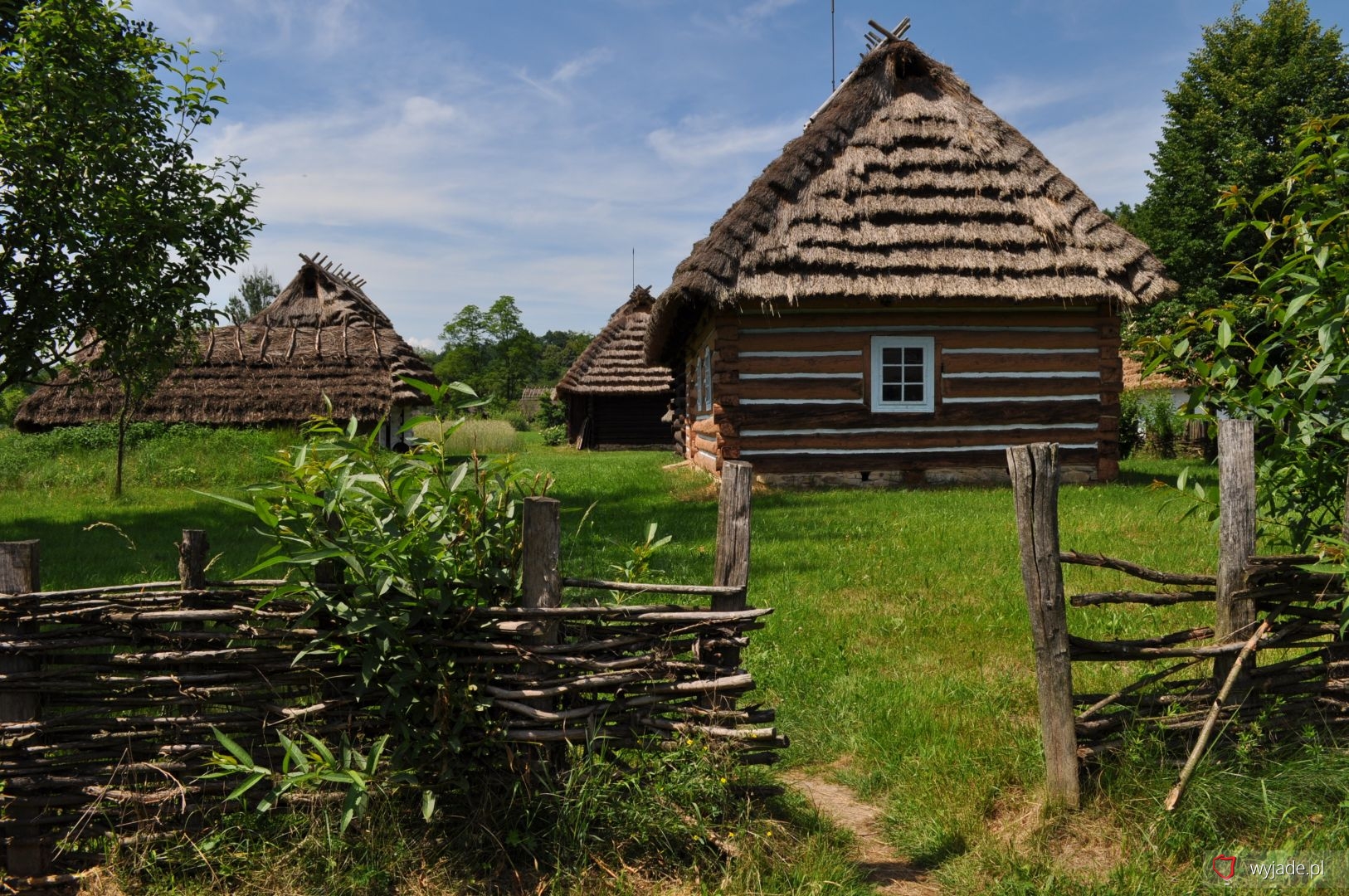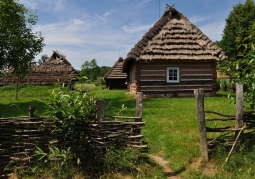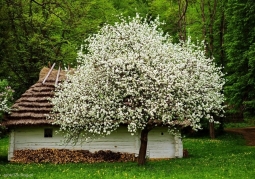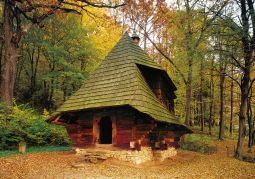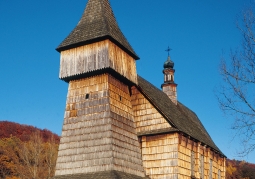Ethnographic Park - Sanok
No weather data
0.0 /5
Number of ratings: 0
The open-air museum in Sanok is one of the most beautiful open-air museums in Europe - the picturesque location on the right bank of the San at the foot of the Sanocko-Turczańskie Mountains quite faithfully reflects the physiography of Podkarpacie. In terms of the number of facilities, it is the largest open-air museum in Poland. In the area of 38 ha, the culture of the Polish-Ukrainian borderland is presented in the eastern part of the Polish Carpathians (Bieszczady, Low Beskids) along with Podkarpacie. Individual ethnographic groups (Bojków, Łemków, Pogórzanie and Dolinianie) have separate exhibition sectors perfectly adapted to the physiography of the area. Recreating typical village development and farm layout systems, the Museum has collected over 100 wooden buildings from the 17th to 20th century, where next to residential, residential and business buildings, there are also sacred buildings in the Park (a 17th-century church, two 18th-century Boyko churches, one impressive Lemko church from the early 19th century and several picturesque chapels), public buildings (village school, inn) and industrial facilities (water mill, windmills, forges). Both temples and most residential and farm buildings have fully furnished and open to visitors interiors (including craft workshops: weaving, potter, wheelwright, manufacturer of wooden spoons, wicker baskets, etc.). A magnificent permanent exhibition of icon painting was organized in the Ethnographic Park. The Carpathian icon, on which over 220 icons were presented (from the 15th to the 20th century), showing the full development of this type of painting in the zone of the Polish Carpathians. The exhibition activities are complemented by temporary exhibitions organized from own collections (the exhibitions and magazines contain nearly 30,000 exhibits gathering monuments in the field of folk culture, culture of inhabitants of Podkarpackie cities and towns, including a rich collection of icons, oil prints, Judaica, clocks, copper vessels, ceramics, kilims and other objects in the field of arts and crafts). The Museum conducts significant publishing activity - Materials of the Museum of Folk Architecture in Sanok (a regional year devoted to ethnography of Podkarpacie) and the scientific journal Acta Scansenologica (dealing with the problems of open-air museums in Poland and in the world) are regularly published.

Orthodox church of St. Onufry of Rosolina
Category: ChurchesGreek Catholic church of Boykos from Rosolin near Lutowiska built in 1750 with complete equipment, presented at the open-air museum in Sanok. The founder of the temple is unknown, perhaps it was a family of village...
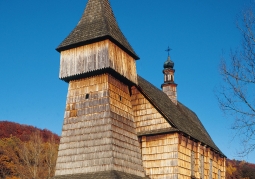
Church St. Mikołaj from Bączal Dolny
Category: ChurchesThe church from Bączal Dolny - a Roman Catholic church dedicated to Saint. Mikołaj, built in 1667 in Bączal Dolny from the foundation of the then owner of Bączal and the surrounding lands, Jan Łętowski together...
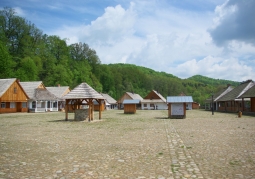
Galician Market
Category: Districts, streets and stallsThe Galician market in Sanok is a municipal sector at the Museum of Folk Architecture in Sanok. It was officially opened on September 16, 2011. The market area presents examples of urbanization of small towns occurring...
Komentarze
No results
Nearby places

Galician Market - Ethnographic Park - Sanok
Category: Districts, streets and stallsThe Galician market in Sanok is a municipal sector at the Museum of Folk Architecture in Sanok. It was officially opened on September 16, 2011. The market area presents examples of urbanization of small towns occurring...
1 km

Church St. Mikołaj from Bączal Dolny - Ethnographic Park - Sanok
Category: ChurchesThe church from Bączal Dolny - a Roman Catholic church dedicated to Saint. Mikołaj, built in 1667 in Bączal Dolny from the foundation of the then owner of Bączal and the surrounding lands, Jan Łętowski together...
1 km

Orthodox church of St. Onufry of Rosolina - Ethnographic Park - Sanok
Category: ChurchesGreek Catholic church of Boykos from Rosolin near Lutowiska built in 1750 with complete equipment, presented at the open-air museum in Sanok. The founder of the temple is unknown, perhaps it was a family of village...
1 km
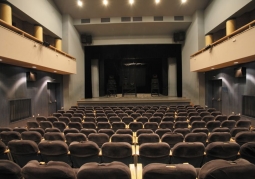
Sanocki Community Center - Sanok
Category: Community centersSanocki Dom Kultury is a modern institution dealing with the dissemination of culture. The center conducts comprehensive activities, directing its clients a rich cultural offer. The basic program assumption of the...
2 km
Nearby places

Galician Market - Ethnographic Park - Sanok
Category: Districts, streets and stallsThe Galician market in Sanok is a municipal sector at the Museum of Folk Architecture in Sanok. It was officially opened on September 16, 2011. The market area presents examples of urbanization of small towns occurring...
1 km

Church St. Mikołaj from Bączal Dolny - Ethnographic Park - Sanok
Category: ChurchesThe church from Bączal Dolny - a Roman Catholic church dedicated to Saint. Mikołaj, built in 1667 in Bączal Dolny from the foundation of the then owner of Bączal and the surrounding lands, Jan Łętowski together...
1 km

Orthodox church of St. Onufry of Rosolina - Ethnographic Park - Sanok
Category: ChurchesGreek Catholic church of Boykos from Rosolin near Lutowiska built in 1750 with complete equipment, presented at the open-air museum in Sanok. The founder of the temple is unknown, perhaps it was a family of village...
1 km

Sanocki Community Center - Sanok
Category: Community centersSanocki Dom Kultury is a modern institution dealing with the dissemination of culture. The center conducts comprehensive activities, directing its clients a rich cultural offer. The basic program assumption of the...
2 km
